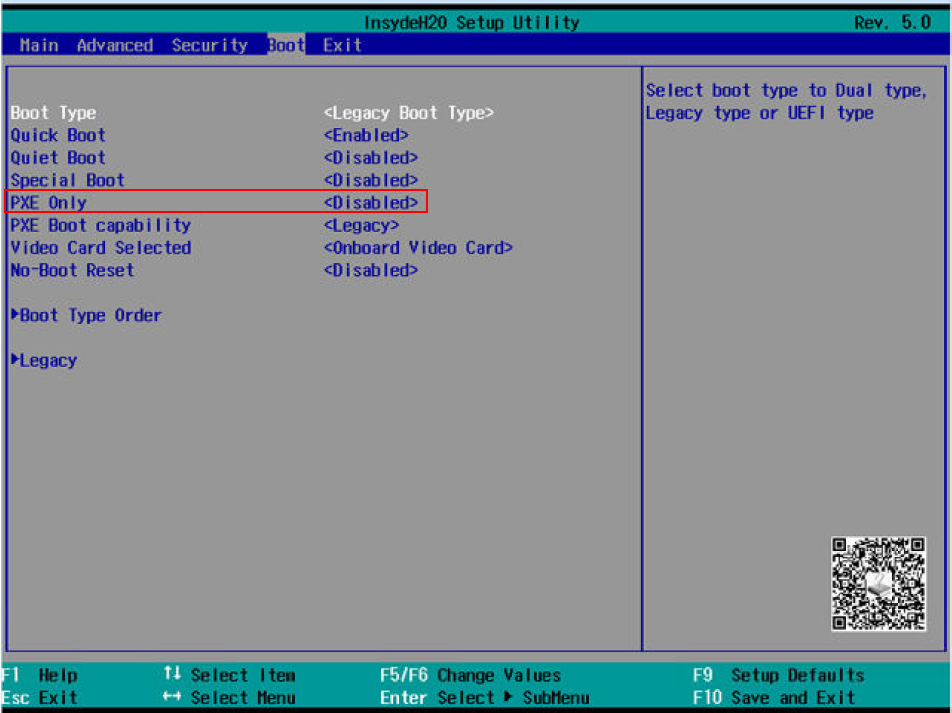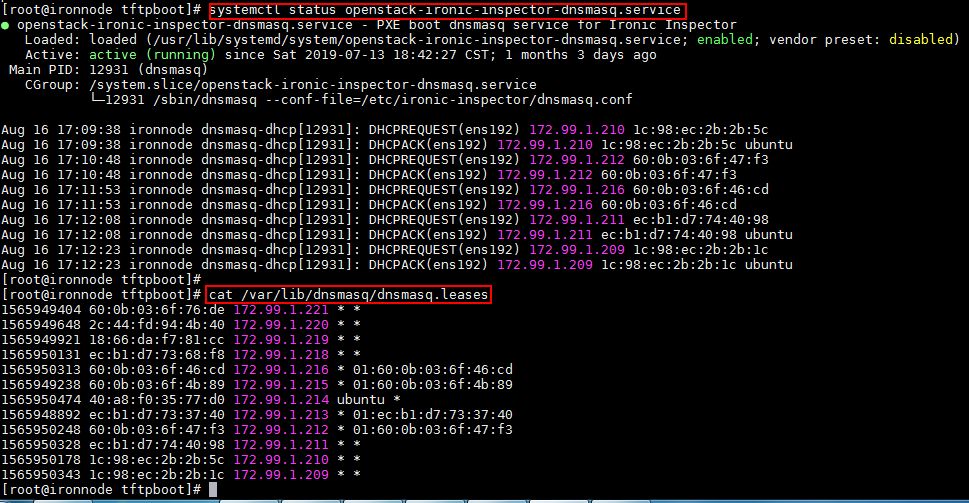FAQs for node detection
Restrictions and guidelines
Enable PXE for the NIC that accesses the bare metal management network, and set the boot mode to Legacy BIOS.
For some Huawei servers (such as RH2288H V3), you must set the value for the PXE Only parameter in the BIOS boot options to Disabled. If you do not perform this task, the server will enter the device detection phase after being deployed and restarted.
Figure-1 PXE Only parameter
For some Sugon servers, you must manually set the value for the Network Stack parameter in BIOS to Enabled and make sure the value for the Ipv4 PXE support parameter is Enabled to avoid server detection failures.
Figure-2 Editing BIOS settings

As a best practice, access the remote console to verify the device startup process during node detection. If the setup page opens after the device starts, the device startup process is abnormal. The bare metal node does not cause this issue, and you can contact the technical support. Perform device detection again after the issue is resolved.
Figure-3 Setup page
DHCP address obtaining failure
Execute the following commands to view address obtaining information.
Figure-4 View address obtaining information
Execute the following command to check whether the compute node has received DHCP packets:
tcpdump -i ens192 -A 'udp and port 67 and port 68' -w /root/test.pcap
ens192 represents the NIC name, and test.pcap represents the DHCP packet file name.
Use the ethereal or Wireshark software to open the test.pcap file to check whether the PXE NIC of the server has sent DHCP packets.
If the DHCP service is running correctly, but the compute node does not receive the packets sent by the server's NIC, verify the network configuration.
The system prompts "No DHCP or proxyDHCP offers were received" during deployment
This issue is caused by insufficient IP addresses in the DHCP address pool. To resolve the issue:
Edit the value of the dhcp_range parameter in the /etc/ironic-inspector/dnsmasq.conf configuration file.
Execute the following command to restart the openstack-ironic-inspector-dnsmasq.service service:
systemctl restart openstack-ironic-inspector-dnsmasq.service
Disk data error occurred after node detection succeeded
Whether hardware information can be obtained correctly depends on the kernel driver of the small image. The obtained data might be incorrect if the RAID driver version in the small image does not support the hardware. In this scenario, re-create a small image that supports the RAID hardware.


